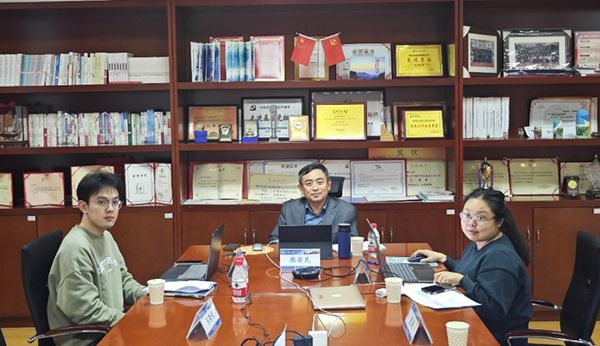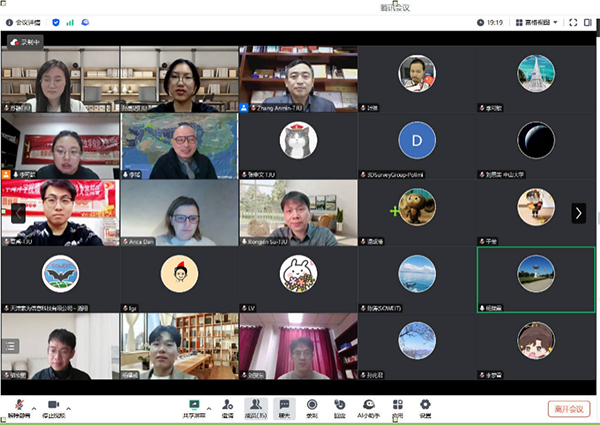Release time:2024-12-04
On November 29, 2024, the School of Marine Science and Technology at Tianjin University held an "Sino-Euro Forum of Archaeology and Cultural Heritage Conservation of Space, Land and Underwater" in Meeting Room 305. This conference, not only a highlight of the 10th anniversary celebration of the school, but also an important platform for enhancing exchanges and cooperation between China and Europe in the field of cultural heritage protection. The school, in cooperation with the China Western Development Research Center of Northwest University and the Belt and Road Research Institute, invited leaders, experts, and scholars from Italy, France, and China in the fields of archaeology, cultural heritage protection management, archaeology, and marine technology to exchange ideas on topics such as underwater and underwater archaeology, cultural heritage protection, and cultural dissemination, thereby promoting technological innovation and international cooperation in the field of underwater archaeology and cultural heritage protection.

This forum invited a number of top domestic and foreign experts and scholars to jointly explore the latest achievements and practical experience in the fields of underwater cultural heritage protection, digital archaeology, and cultural landscape research. The guests attending the conference were Professor Barbara Davidde, Director of the Underwater Heritage Department of the Italian Ministry of Cultural Heritage, Professor Anca-Cristina Dan, Alfred Vespremeanu-Stroe, and Luminita Preoteasa from the French National Center for Scientific Research and the University of Bucharest, Professor Zhang Anmin from the College of Ocean Science and Technology, Tsinghua University, Professor Ruixia Yang from the Center for Space Technology and Heritage, UNESCO-CNRS, Tsinghua University, Research Assistant Hongpeng Luo from the Spatial Humanities and Places Computing Laboratory, Harbin Institute of Technology (Shenzhen), and Associate Researcher Chenghao Wenfrom the Archaeological Institute of the Chinese Academy of Social Sciences.

The forum exchanged and discussed six topics, with a welcome speech delivered by Professor Rongxin Su, Vice Dean of the School of Marine Science and Technology, Tianjin University, and hosted by Tao Li, the expert at the Institute of West China Development Research, Northwest University's "Belt and Road" Academy. The conference highlighted the achievements of the Ocean Institute in underwater archaeology and cultural heritage protection over the past ten years and looked forward to providing new ideas and platforms for technological innovation and international cooperation in this field.
Professor Barbara Davidde introduced the advanced technologies used in Italy for the protection of underwater heritage, particularly the underwater communication system developed in the MUSAS project, focusing on the protection and restoration of underwater sites in regions such as Campania and Calabria, helping divers to detect underwater sites efficiently and safely in deep sea.
Professor Anca-Cristina Dan emphasized the historical and cultural significance of the Danube, especially its strategic role as a frontier and transport route. She detailed how interdisciplinary joint research can locate ancient submerged sites in the delta using disciplines such as archaeology and geology, and explained the formation, evolution, and human impact on the Danube Delta.
Professor Zhang Anmin showcased a multi-functional surface vessel developed by the Ocean Institute of Tianjin University, which features advanced technologies such as 3D scanners and magnetometers. The vessel can support underwater terrain mapping and archaeological research, greatly improving the efficiency of underwater archaeological research and cultural relic protection.
Professor Ruixia Yang used the Zhengzhou City's Gongyixian Shuanghuashu site, which was named one of the top ten archaeological discoveries in China, as an example to explain how environmental archaeology techniques can be used to study the site's landscape and architectural layout. By using the driving force of climate change on the evolution of the landscape, digital reconstruction of ancient landscapes was demonstrated, showcasing the latest research findings of digital environmental archaeology technology, and revealing the profound impact of climate change on the site's environment.
Dr. Hongpeng Luo introduced the progress of cultural landscape research in Shangmusitang area, Nepal, focusing on the research framework and challenges, especially how to study cultural sites along the Nibo River upstream through multi-disciplinary cooperation.
Dr. Chenghao Wen, a researcher, introduced the Dobrovača archaeological project jointly conducted by China and Romania, covering topics such as cultural dissemination, reconstruction of prehistoric houses, and the dissemination of Bronze Age culture. He explored the connection between the Yangshao culture in Henan Province and the Tripodia culture in the West and provided a detailed account of the archaeological excavations at Romanian sites and the discovery of Bronze Age relics.
This forum not only strengthened the cooperation between China and Europe in underwater archaeology and cultural heritage protection, but also added a thick stroke to the 10th anniversary celebration of the School of Marine Science and Technology, Tianjin University. Participants all agreed that they would continue to promote interdisciplinary cooperation and technological innovation, striving for greater breakthroughs in underwater archaeology and heritage protection. Through this experience exchange, the school will continue to leverage its advantages in ocean science, digital protection technology, etc. to make greater contributions to the protection and research of global cultural heritage.